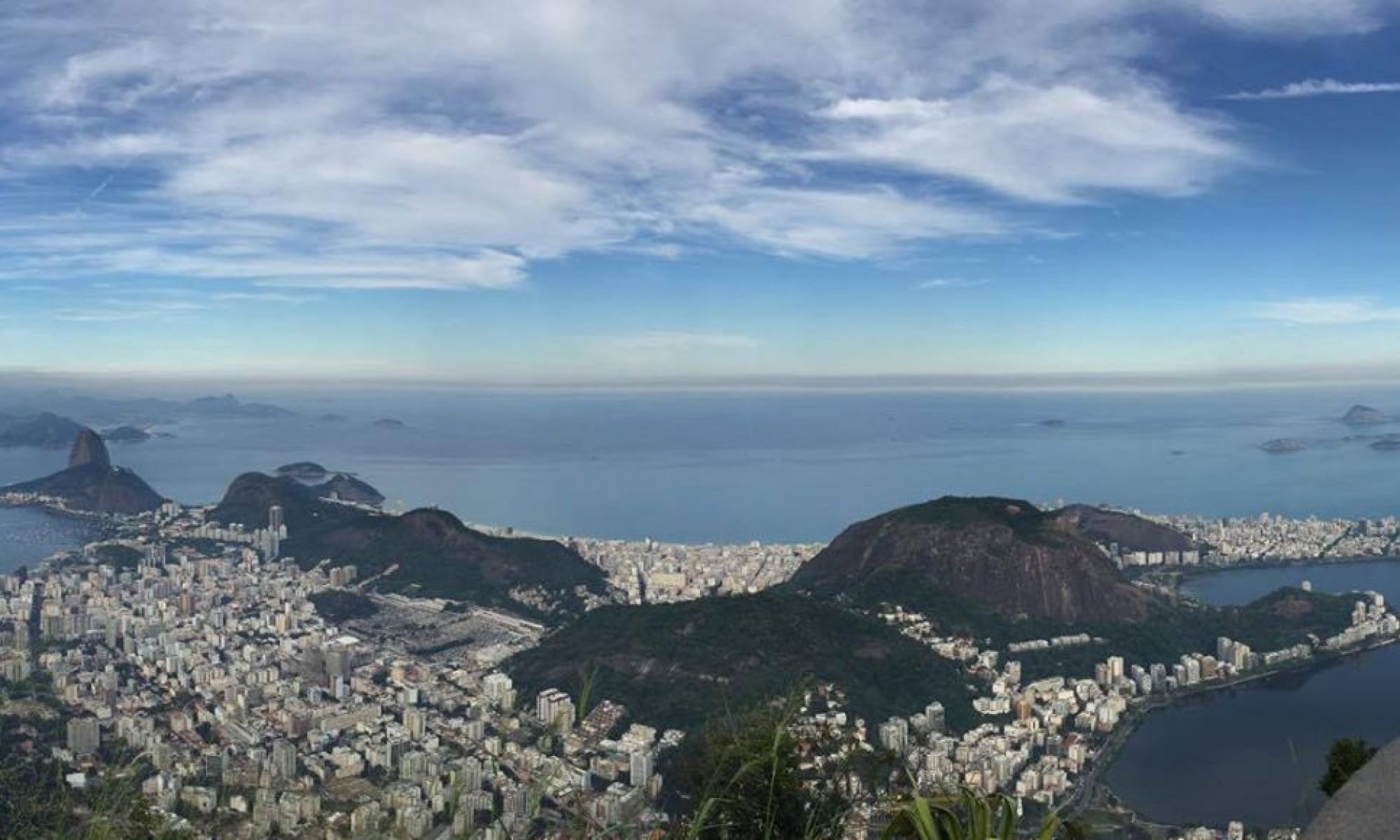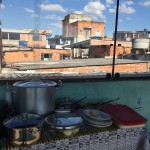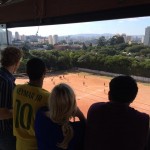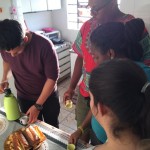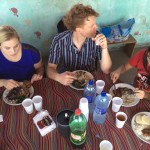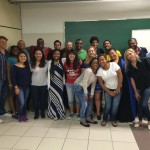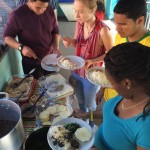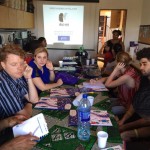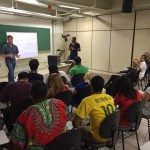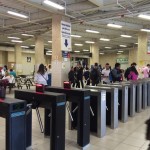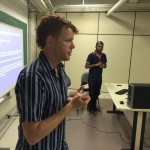June 13, 2015
By: Aleksandra Syniec
After a scrumptious breakfast at Café Hostel, we headed out to Universidade Nove de Julho (UNINOVE). Unlike the University of São Paulo, this is a private university, meaning that most of the students we saw in attendance come from a working class background. In Brazil, public universities offer the best educations and are free; but institutional discrimination permits an almost impossible entrance exam into such universities, barring students of color and of working class backgrounds to enter.
Our purpose for coming to UNINOVE was to meet with Professor Alan de Loiola Alves, who has his degree in Social Work, and to hear his research on child and adolescent sexual exploitation in Brazil. Professor Alves exposed us to a lucrative business where children from birth to twelve years old, as well as adolescents aged twelve to seventeen are exploited in prostitution, pornography, sex tourism, and sex trafficking. Exploitation happens in one of two ways; either in organized networks or disorganized networks. In organized networks, there are set prices for sexual acts as opposed to the disorganized networks that have less structure. Similarly to any other job market, females are paid anywhere from seven to twenty reais (US $2 – $6) whereas a male earns fifty reais (US $16). The same is true for race where a white child will receive more money than a black child. Brazil’s “symbol of beauty… has blond hair and blue eyes,” (Goldstein: 2003: 122). A lot of times these children are priced higher depending on their sexual maturity. Many take supplements such as steroids, sexual stimulants, and other drugs to perform sexual acts numerous times per night. In the end, however, even if the profit is 250 reais (US $80), they owe their “pimp” or “agent” more than this, trapping them in a cycle of debt. Another key component of child exploitation is the gender identification of transvestites. Young boys, mostly in unorganized networks, going through the transformation from male to female, are thrown into this line of work because of rejection from family, the educational system, and society. In lower classes, mothers push their children into prostitution because of the profit it can bring in for the family. Social workers therefore play a vital role in attempting to remove these children from this sexual exploitation and place them into new homes and schools. Policies have also been enacted starting in 1990 to protect children from such work. Prostitution is legal in Brazil as long as it is an adult selling their own body; however in those cases where the sex worker is being exploited, the blame and illegality fall on the client not the prostitute. Therefore social workers are determined to take preventative measures to deter children from remaining in the sexual exploitation network by providing them other options. At the end of the lecture we discussed with the university students some similarities and differences between the sex market in the US and in Brazil.
After the presentation, we hopped onto the Metro and then a bus to return to the University of São Paulo. But this time it was to see what lies next to the university: a favela named São Remo. We learned from Ms. Janeide de Sousa Silva, who hosted us along with her sister, Janete de Sousa Silva, for lunch, that she preferred to call her community a favela. She discussed the political connotation of a favela. For example, when applying for jobs, one can be denied the job if they are associated with living in a favela. But on the other hand, if the residents of the favela call it a community instead, they ignore many of the problems in the area. Janeide had pride in calling São Remo a favela and also acknowledged the advancement of the area. She stated, “If you can’t speak about where you come from. You can’t fight to have better.” She herself does not live in São Remo because it has become too expensive.
Both Janeide and Janete had worked on lunch from 11 p.m. to 5 a.m., and boy was it delicious! It was a traditional Brazilian bean stew (feijoada) with sausage and beef, served with oranges, rice, and Brazilian style collard greens. We all were full and satisfied from the meal, which we ate on the roof of the Projeto Alavanca building. After this lunch we were led downstairs to learn more about the project and its goals. Janeide explained to us how she works alongside her sister and other community members to organize a “Sarau da Remo” every month. A “sarau” is an open space for expression, whether it be artistic or cultural, for the people of Remo. This space has promoted the idea of “Na Voz, A Vez” which means, “by having your voice, you have your turn.” Now people of the community can come together to share their ideas and be heard; once voiceless, now loud. Since the neighborhood has very few public spaces, this space is one of diversion as well as expressing a political voice.
We then had the opportunity to walk around the community. There was a soccer championship going on between the community teams; dogs roamed the streets; children road on their roller blades; and men were building a home. The community was alive, with music in the streets. We stopped at Dona Maria José, a community leader. There we were accepted with open arms and given coffee and cookies. The women started to speak about the relations with the university and the favela. Many including Dona Maria José have been working at the university for years. However the women also discussed how the community was not always gated, before children could play on the campus grounds. The University of São Paulo is the best in Latin America and has many upper class, white students. This highly contrasts with the population of the favela. Hence a wall had to be built; a space had to be protected. “In a context of increased fear of crime in which the poor are often associated with criminality, the upper classes fear contact and contamination,” (Caldeira: 1996: 330). The women also spoke before the bus that made rounds about the campus was free, but after many complaints from the students and the construction of a nearby metro station, the bus instated a fee to keep the poor from using it. Currently, São Paulo is planning to redesign the area, but it has never consulted the community on what it wants. The residents are eager for the city to intervene to have better infrastructure within the favela, however is fearful of what the city really plans to do with their homes and whether they will be able to afford to remain in them.
